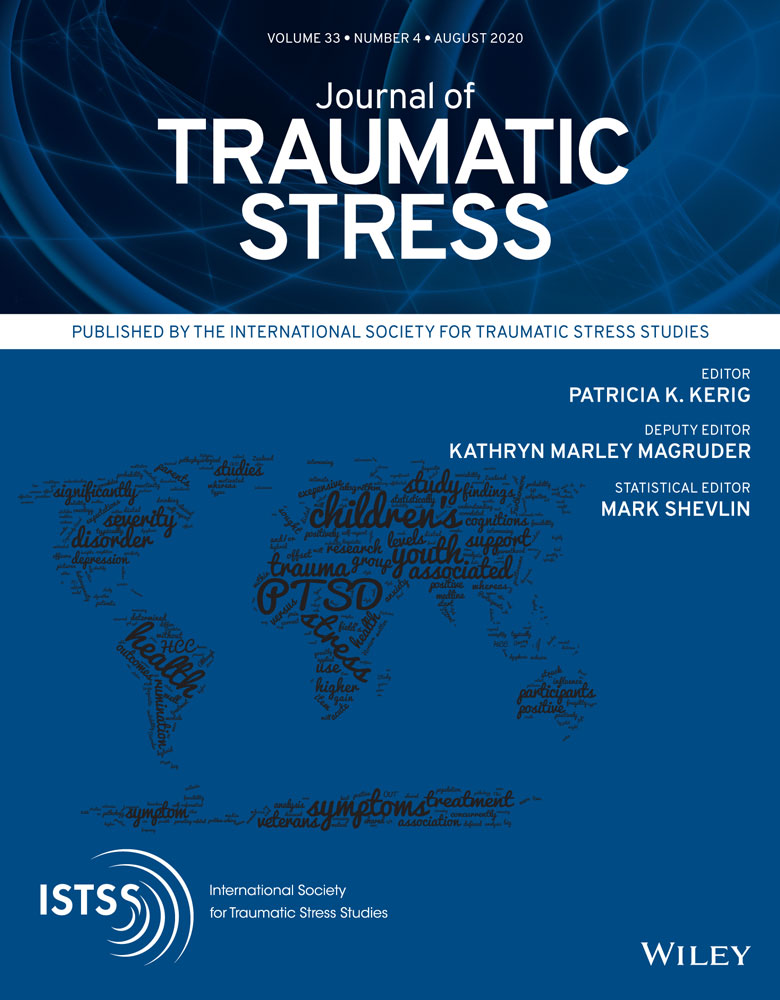Assessing Triggers of Posttrauma Nightmares
Abstract
enPosttrauma nightmares are recurring nightmares that begin after a traumatic experience and can occur as often as multiple times per week, often in a seemingly random pattern. Although these nightmares are prevalent in trauma survivors, little is known about the mechanisms underlying their sporadic occurrence. The present study aimed to investigate predictors of posttrauma nightmares. The sample included 146 observations nested within 27 female college students who reported frequent nightmares related to sexual trauma. Participants were recruited from an undergraduate student subject pool (n = 71) or were clinical referrals (n = 75). Participants completed an initial assessment battery and six consecutive days of pre- and postsleep diaries, which included measures of potential posttrauma nightmare triggers and measures intended to assess sleep quality and posttrauma nightmare occurrence. Descriptive statistics, mean comparisons, and multilevel modeling were used to examine the data. The results showed that both presleep cognitive arousal, γ10SLij = 0.58, p = .006, z(1, N = 146) = −2.61; and sleep latency (SL), γ20PCAij = 0.76, p < .001, z(1, N = 146) = −2.69, predicted posttrauma nightmare occurrence. Further investigation suggested that presleep cognitive arousal moderated the relation between SL and posttrauma nightmare occurrence, γ30PCA x SLij = 0.67, p = .048 z(1, N = 146) = 1.98. The present results are the first to show that the co-occurrence of presleep arousal and delayed sleep onset latency may influence posttrauma nightmare occurrence, suggesting that the time immediately before sleep is crucial to the production of the posttrauma nightmares.
Resumen
esSpanish Abstracts by Asociación Chilena de Estrés Traumático (ACET)
Evaluando los Desencadenantes de las Pesadillas Postraumáticas
EVALUANDO LOS DETECTORES DE LAS PESADILLAS POSTRAUMÁTICAS
Las pesadillas postraumáticas son pesadillas recurrentes que comienzan después de una experiencia traumática y pueden ocurrir múltiples veces por semana, a menudo con un patrón aparentemente aleatorio. Aunque estas pesadillas son frecuentes en los supervivientes de traumas, se sabe poco sobre los mecanismos subyacentes de su aparición esporádica. El presente estudio tuvo como objetivo investigar los predictores de pesadillas postraumáticas. La muestra incluyó 146 observaciones anidadas en 27 estudiantes universitarias que reportaron tener frecuentes pesadillas relacionadas a trauma sexual. Los participantes fueron reclutados de un grupo de estudiantes de pregrado (n = 71) o derivadas de clínicas (n = 75). Los participantes completaron una batería de evaluación inicial y seis días consecutivos de diarios previos y posteriores al sueño, incluyendo medidas de potenciales desencadenantes de pesadillas postraumáticas junto con medidas destinadas a evaluar la calidad del sueño y la ocurrencia de pesadillas postraumáticas. Se utilizó estadística descriptiva, comparaciones de medias y modelos multinivel para examinar los datos. Los resultados mostraron que ambos, tanto el arousal cognitivo previo al sueño, γ10SLij = 0.58, p = .006, z (1, N = 146) = -2.61; como la latencia del sueño (SL), γ20PCAij = 0.76, p <.001, z (1, N = 146) = -2.69, predijeron la aparición de pesadillas postraumáticas. Investigaciones posteriores sugirieron que el arousal cognitivo previo al sueño moderaba la relación entre SL y ocurrencia de pesadillas postraumáticas, γ30PCA x SLij = 0.67, p = .048 z (1, N= 146) = 1,98. Los presentes resultados son los primeros en mostrar que la co-ocurrencia del arousal previo al sueño y la latencia tardía del inicio del sueño pueden influir en la aparición de pesadillas posteriores al trauma, lo que sugiere que el tiempo inmediatamente antes de dormir es crucial para la producción de pesadillas postraumáticas.
抽象
zhTraditional and Simplified Chinese Abstracts by the Asian Society for Traumatic Stress Studies (AsianSTSS)
簡體及繁體中文撮要由亞洲創傷心理研究學會翻譯
Assessing Triggers of Posttrauma Nightmares
Traditional Chinese
標題: 評估創傷後惡夢的誘因
撮要: 創傷後惡夢乃個人經歷創傷性事件後重複出現的惡夢, 其頻繁度可達一星期數次, 惡夢出現的模式似乎隨機。雖然這類惡夢在創傷生還者當中普遍, 但目前我們對於這類惡夢斷斷續續地發生的機制仍缺乏了解。本研究旨在探查創傷後惡夢的預測變量。我們從大學本科生受實驗者群體(n = 71)及從臨床轉介個案招募參與者(n = 75), 發現27名女大學生, 她們報稱頻繁地有與性創傷相關的惡夢, 而我們從中收集了146個觀察。參與者先完成一個初步的測驗組合, 並連續六天進行睡前睡後的日記記錄, 當中記錄的數據包括潛在的創傷後惡夢誘因的測量, 及一些旨在評估睡眠質素和創傷後惡夢發生率的測量。我們採用描述性統計法、平均數比較法及多層次模型來檢視數據。結果反映, 睡前認知激發)γ10SLij = 0.58, p = .006, z(1, N = 146) = -2.61(及睡眠潛伏期(SL))γ20PCAij = 0.76, p < .001, z(1, N = 146) = -2.69(, 均預測出創傷後惡夢的發生。我們進一步檢視, 發現睡前認知激發對SL跟創傷後惡夢發生的關係, 有調節效應)γ30PCA x SLij = 0.67, p = .048 z(1, N = 146) = 1.98(。是次研究結果, 首次反映睡前認知激發跟睡眠潛伏期延遲的共同發生, 可能會影響創傷後惡夢的發生率, 反映睡前的一段時間對於睡時會否出現創傷後惡夢乃關鍵。
Simplified Chinese
标题: 评估创伤后恶梦的诱因
撮要: 创伤后恶梦乃个人经历创伤性事件后重复出现的恶梦, 其频繁度可达一星期数次, 恶梦出现的模式似乎随机。虽然这类恶梦在创伤生还者当中普遍, 但目前我们对于这类恶梦断断续续地发生的机制仍缺乏了解。本研究旨在探查创伤后恶梦的预测变量。我们从大学本科生受实验者群体(n = 71)及从临床转介个案招募参与者(n = 75), 发现27名女大学生, 她们报称频繁地有与性创伤相关的恶梦, 而我们从中收集了146个观察。参与者先完成一个初步的测验组合, 并连续六天进行睡前睡后的日记记录, 当中记录的数据包括潜在的创伤后恶梦诱因的测量, 及一些旨在评估睡眠质素和创伤后恶梦发生率的测量。我们采用描述性统计法、平均数比较法及多层次模型来检视数据。结果反映, 睡前认知激发)γ10SLij = 0.58, p = .006, z(1, N = 146) = -2.61(及睡眠潜伏期(SL))γ20PCAij = 0.76, p < .001, z(1, N = 146) = -2.69(, 均预测出创伤后恶梦的发生。我们进一步检视, 发现睡前认知激发对SL跟创伤后恶梦发生的关系, 有调节效应)γ30PCA x SLij = 0.67, p = .048 z(1, N = 146) = 1.98(。是次研究结果, 首次反映睡前认知激发跟睡眠潜伏期延迟的共同发生, 可能会影响创伤后恶梦的发生率, 反映睡前的一段时间对于睡时会否出现创伤后恶梦乃关键。




